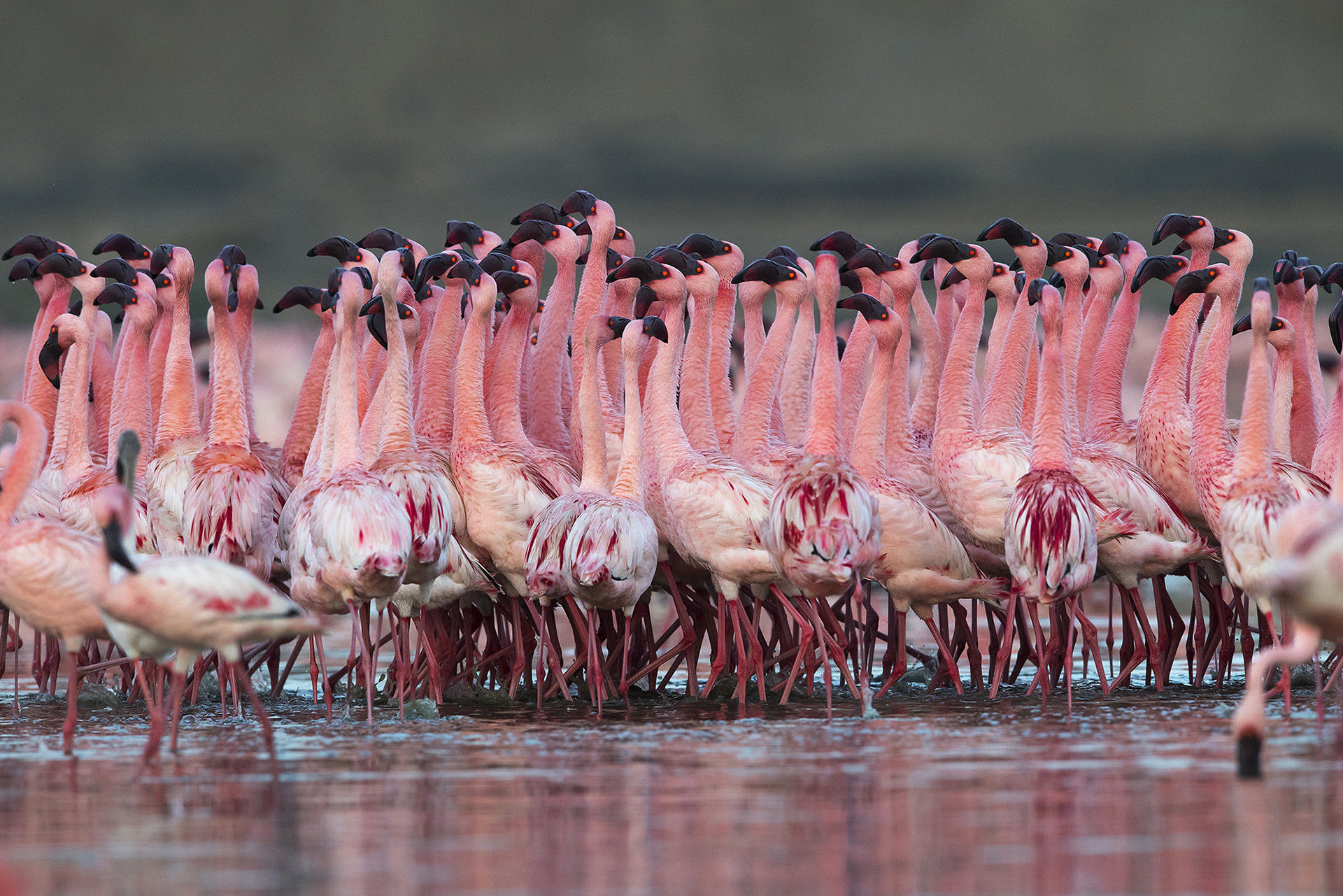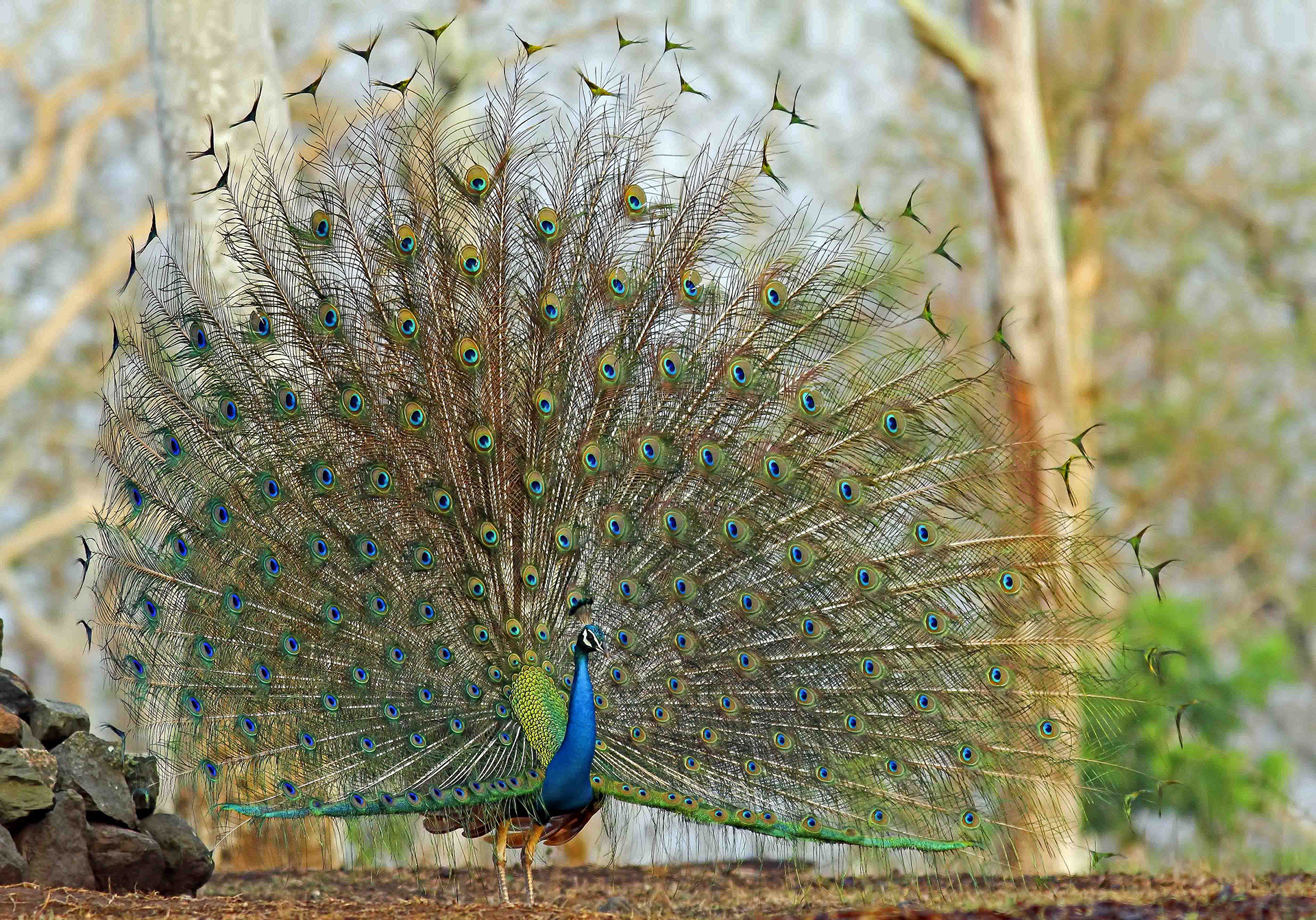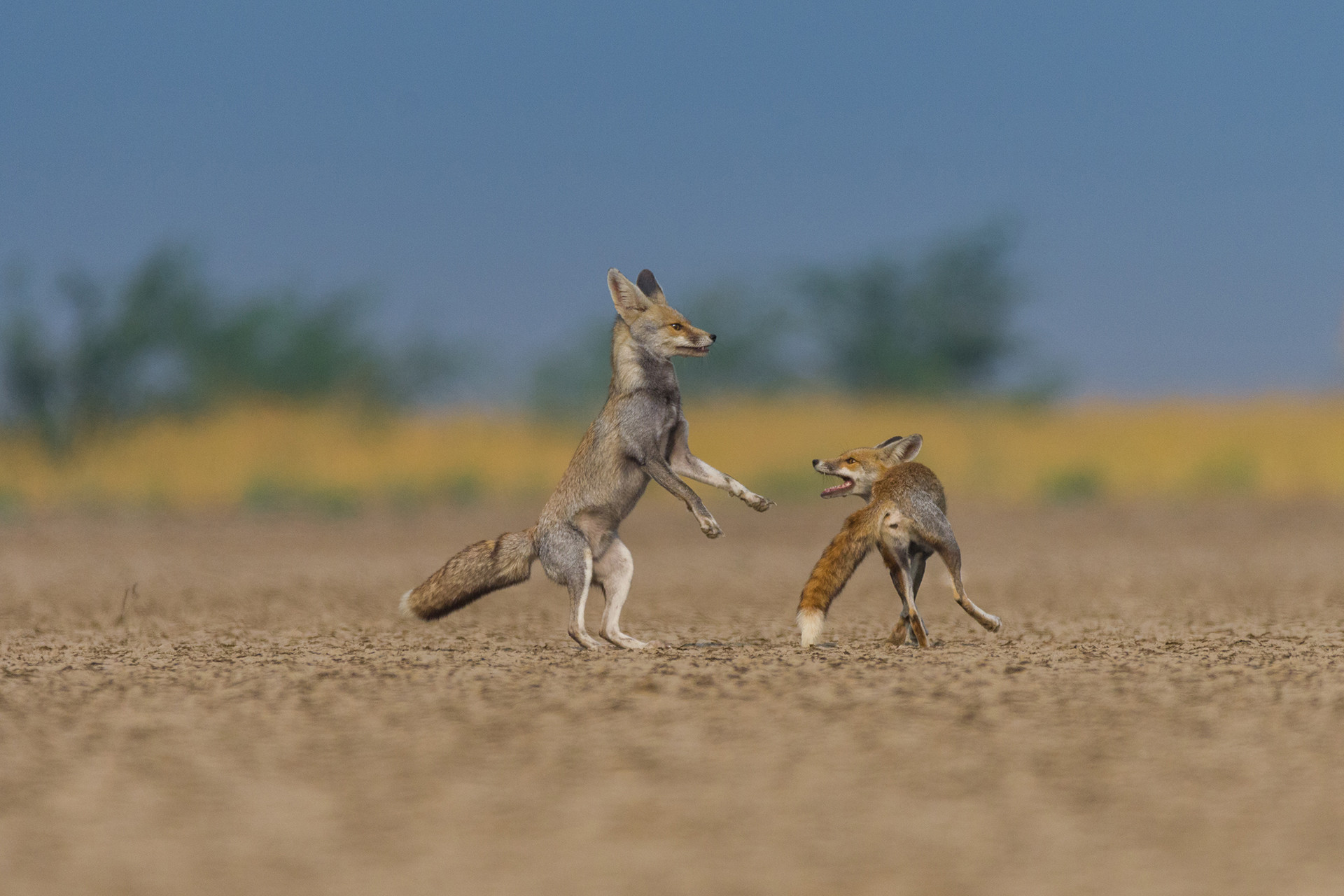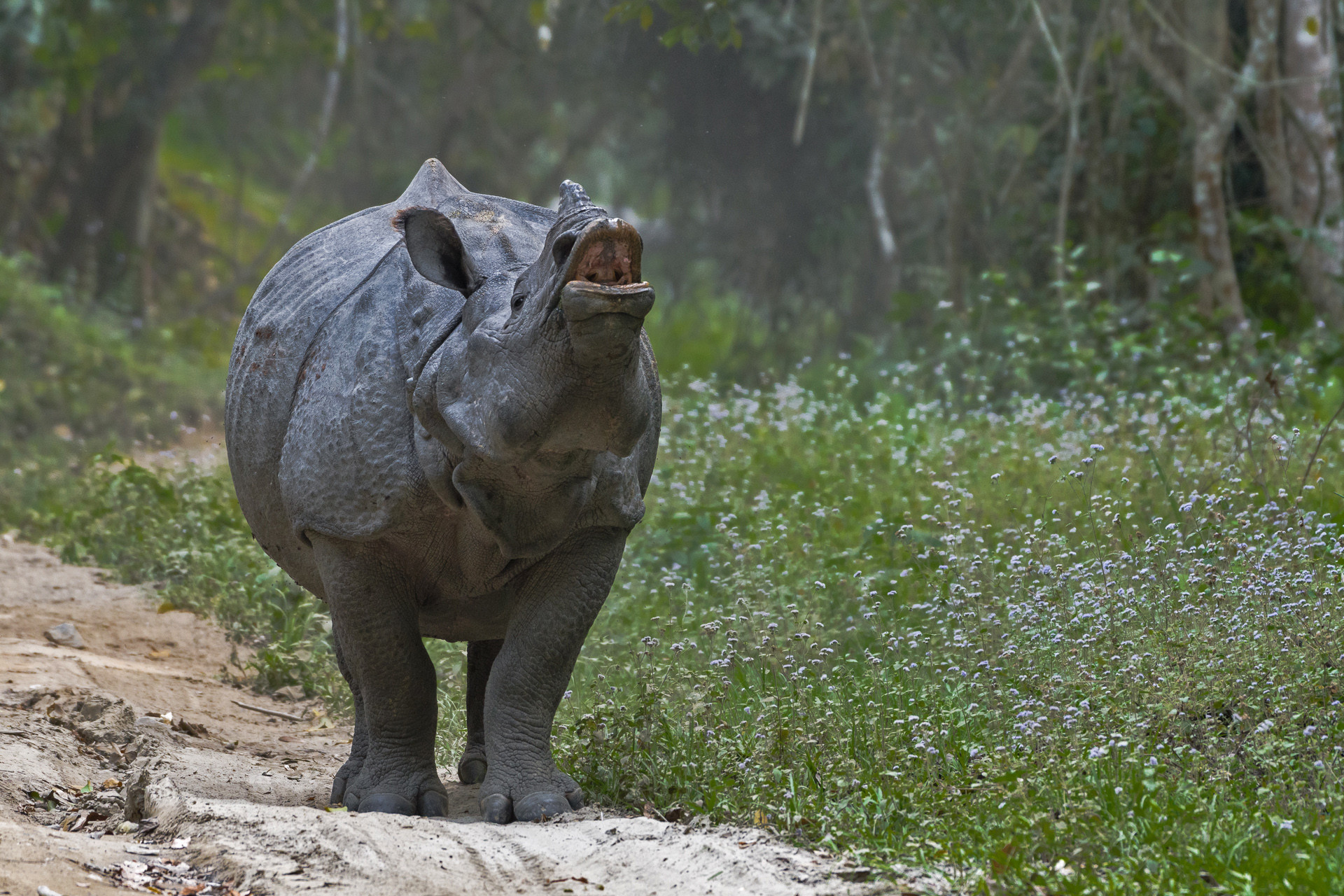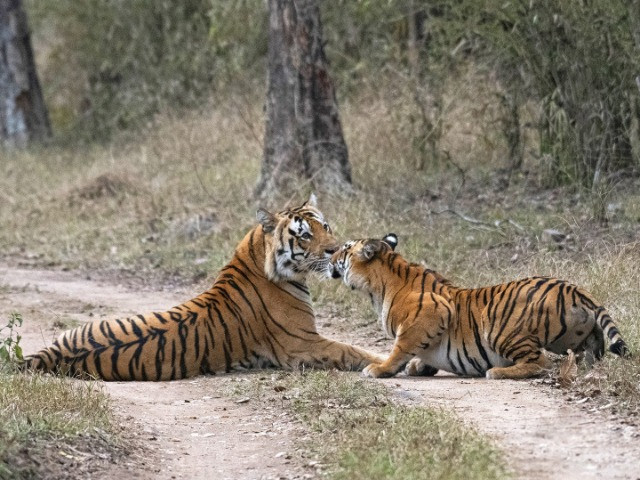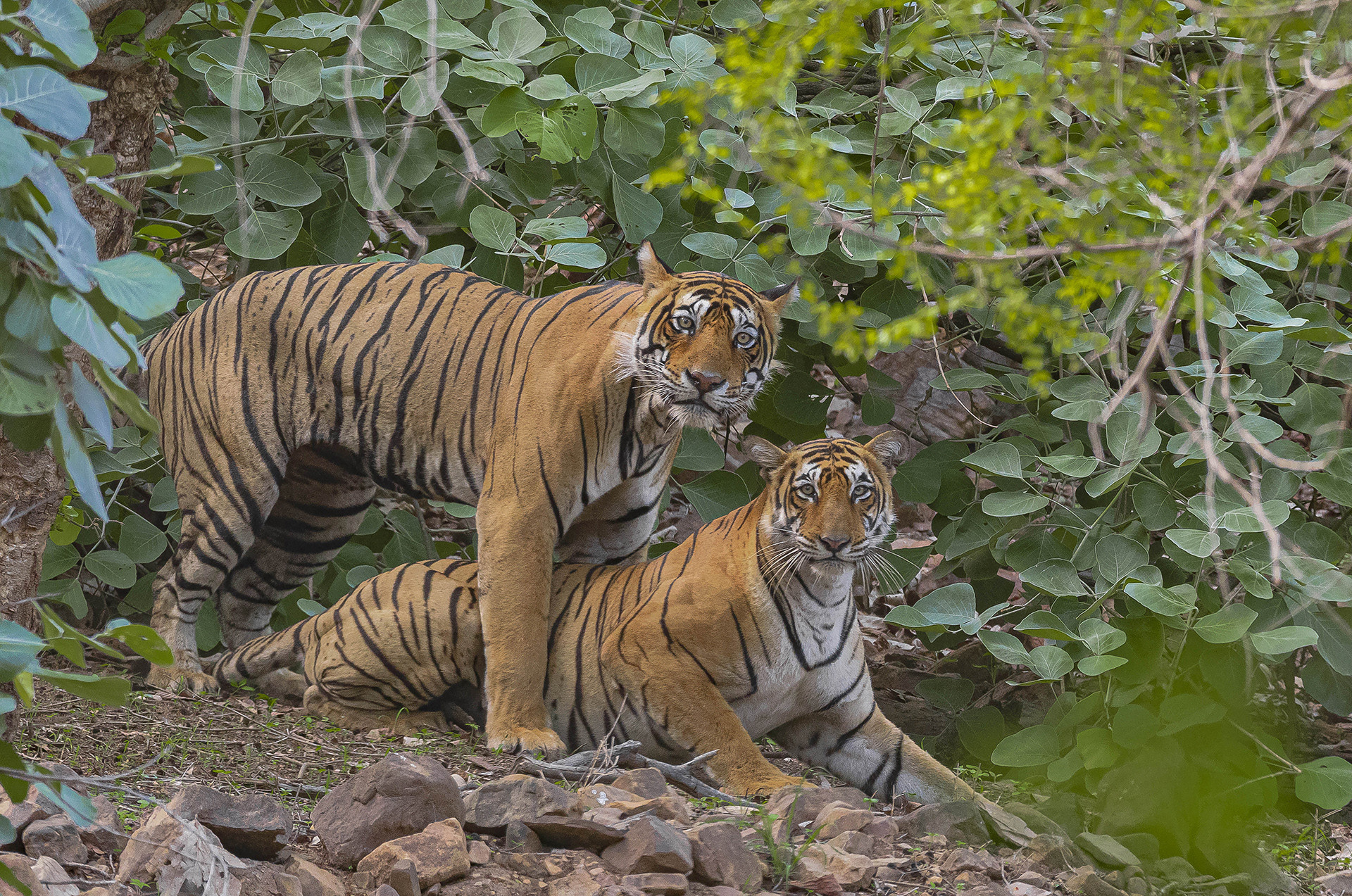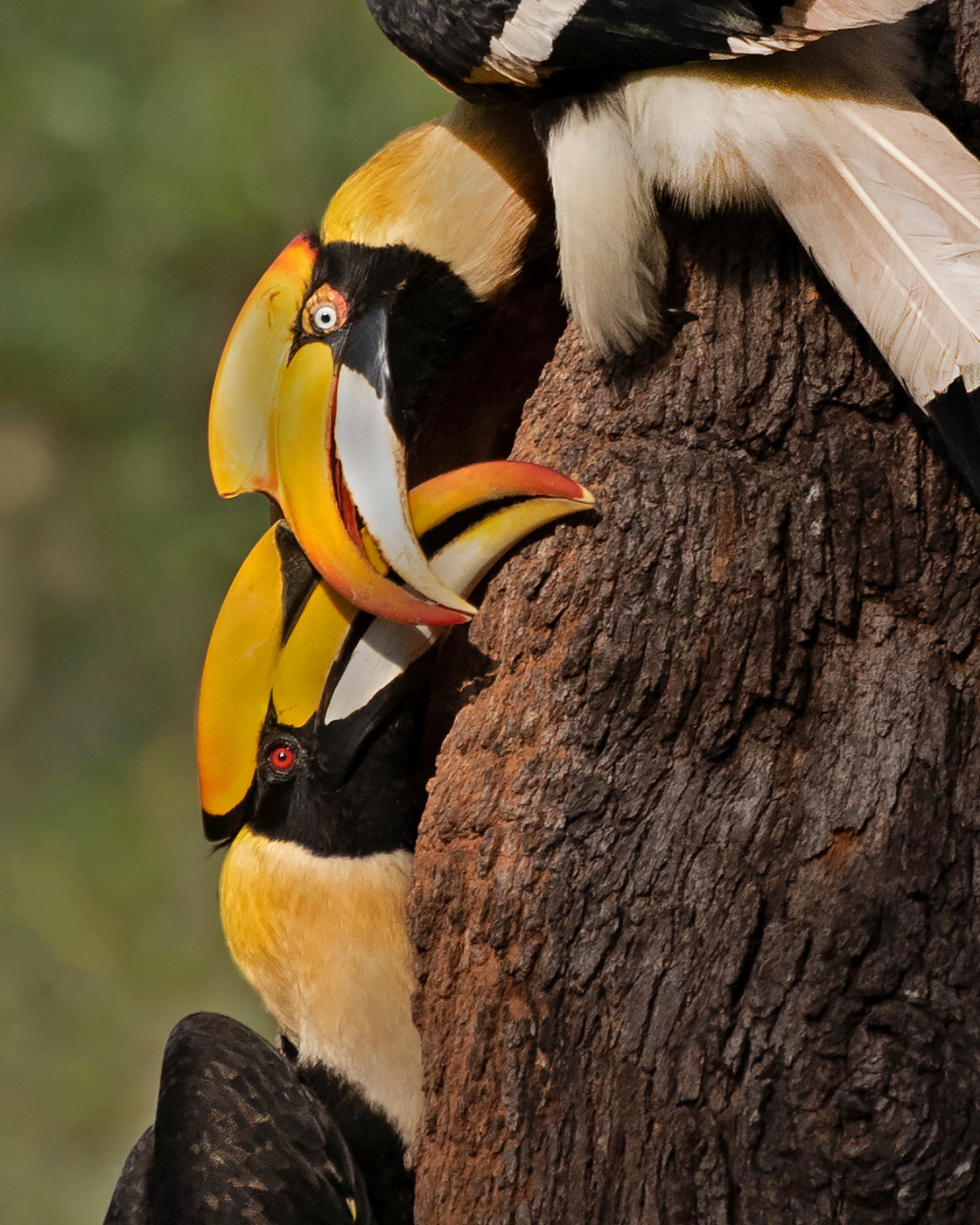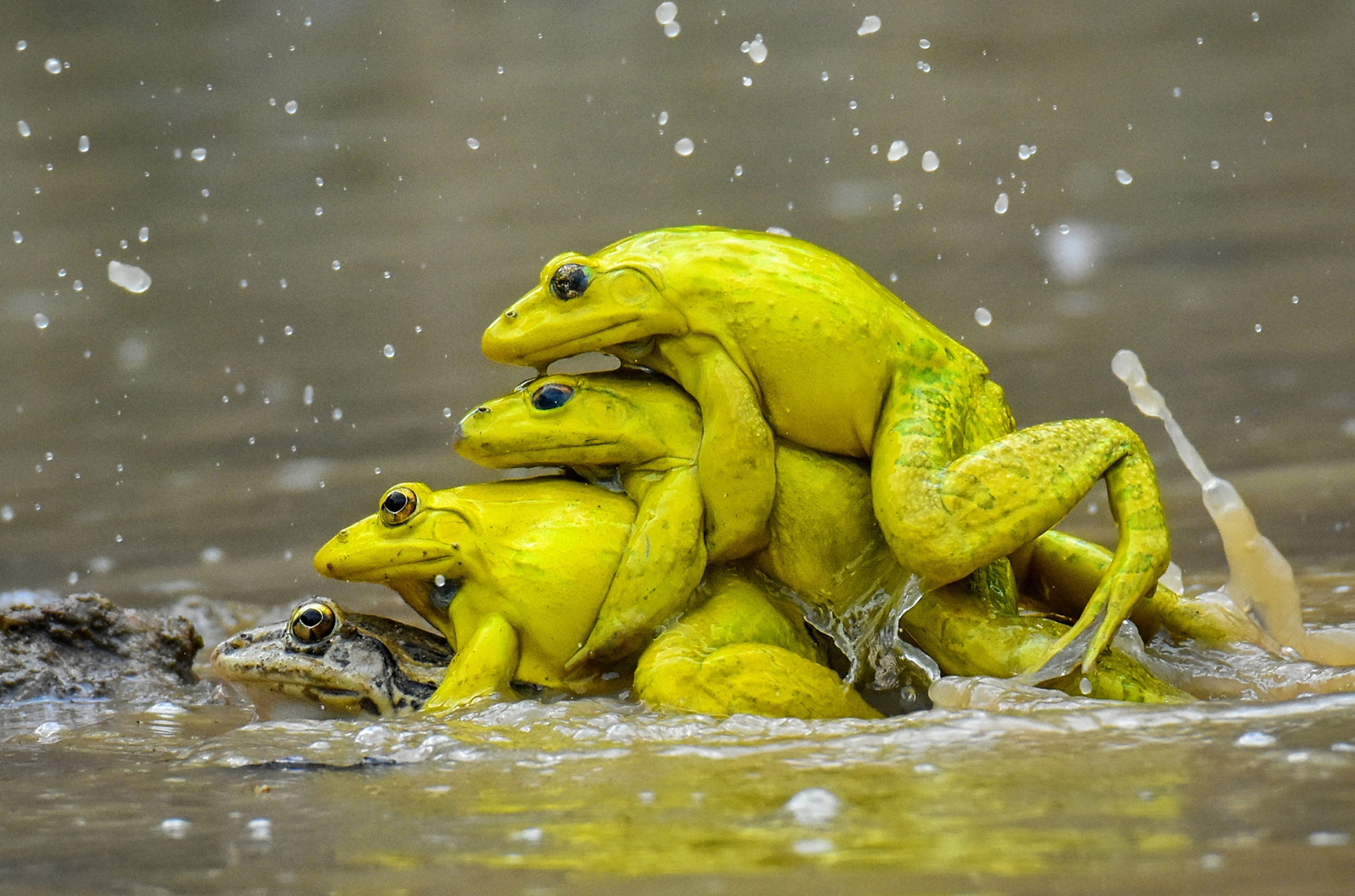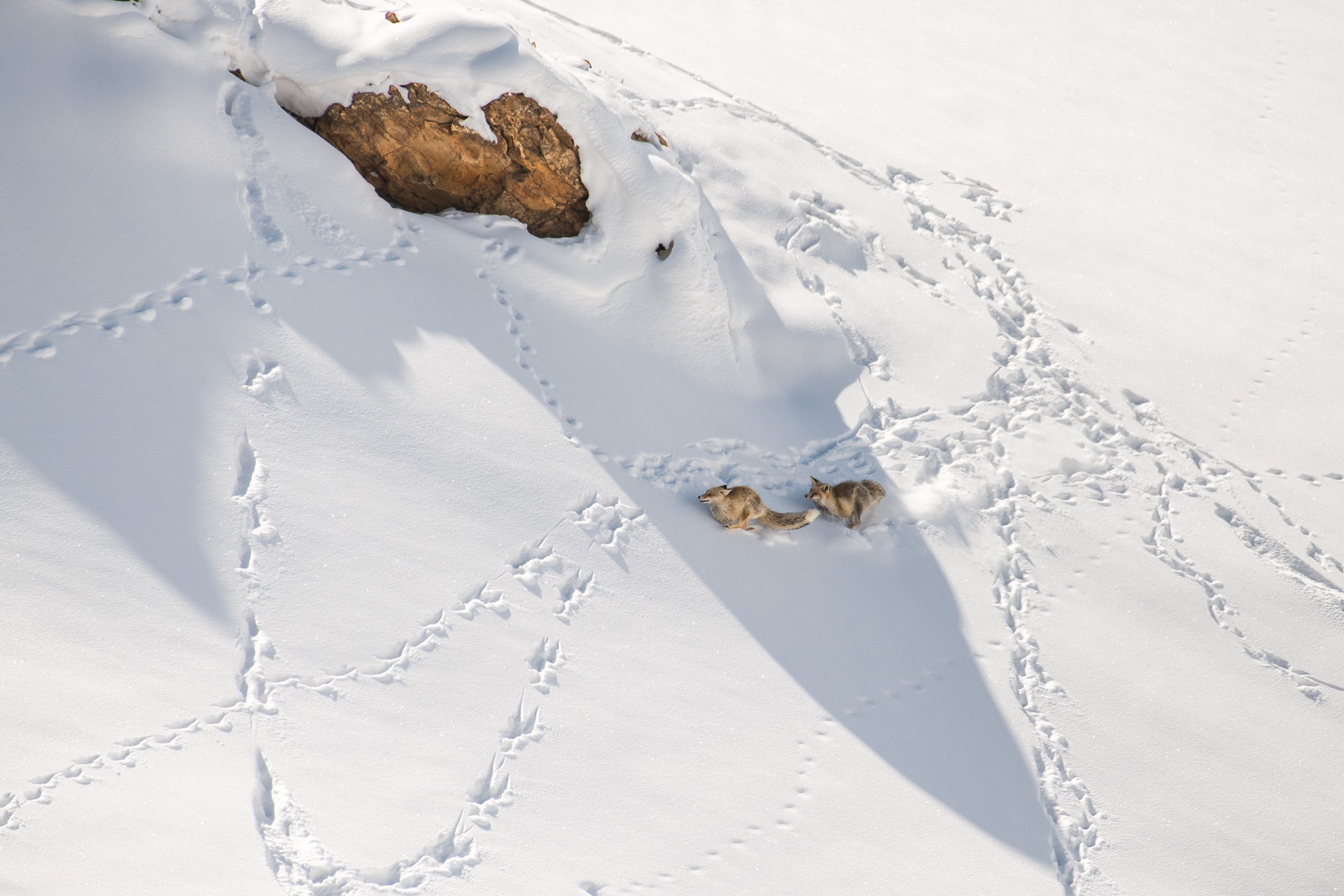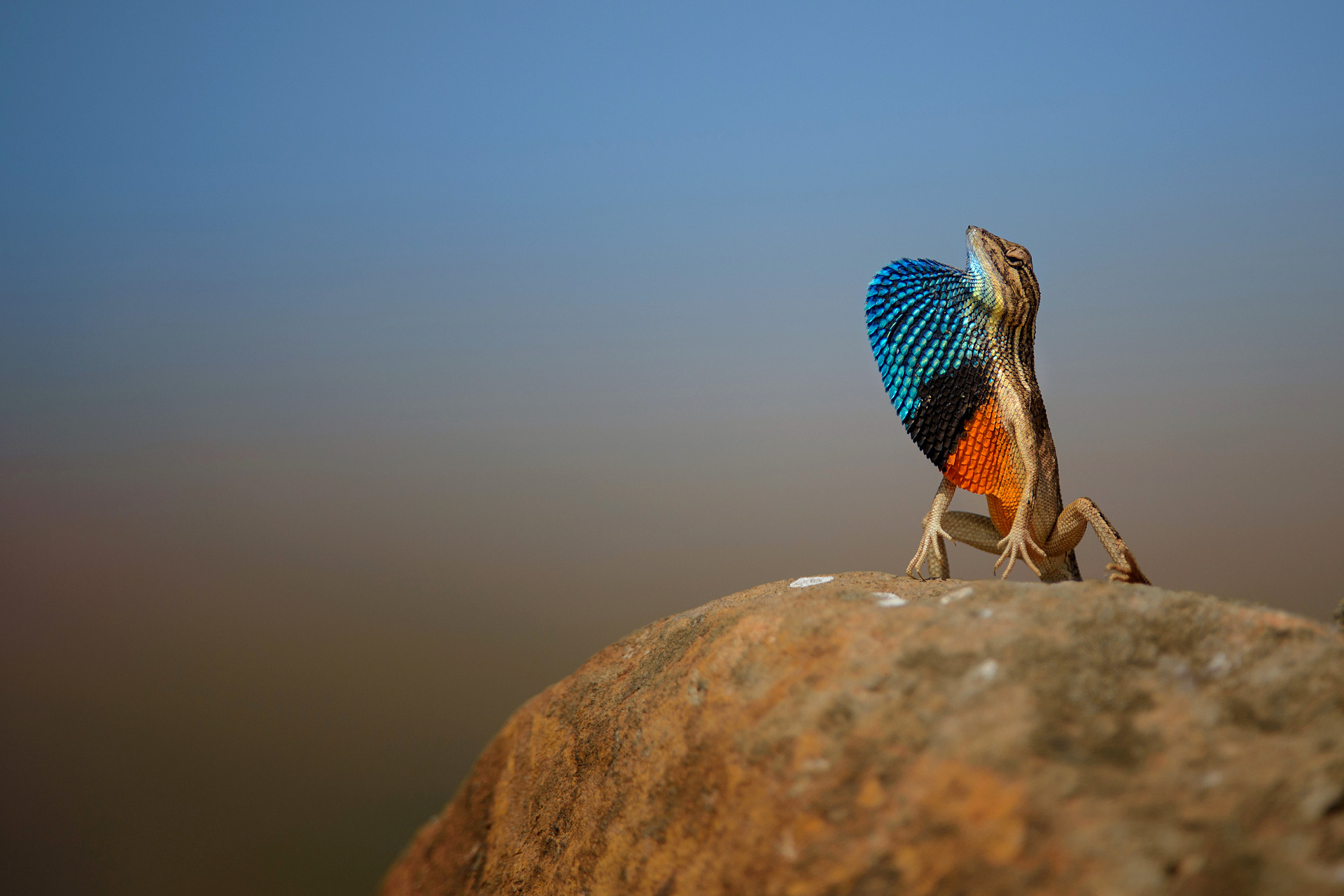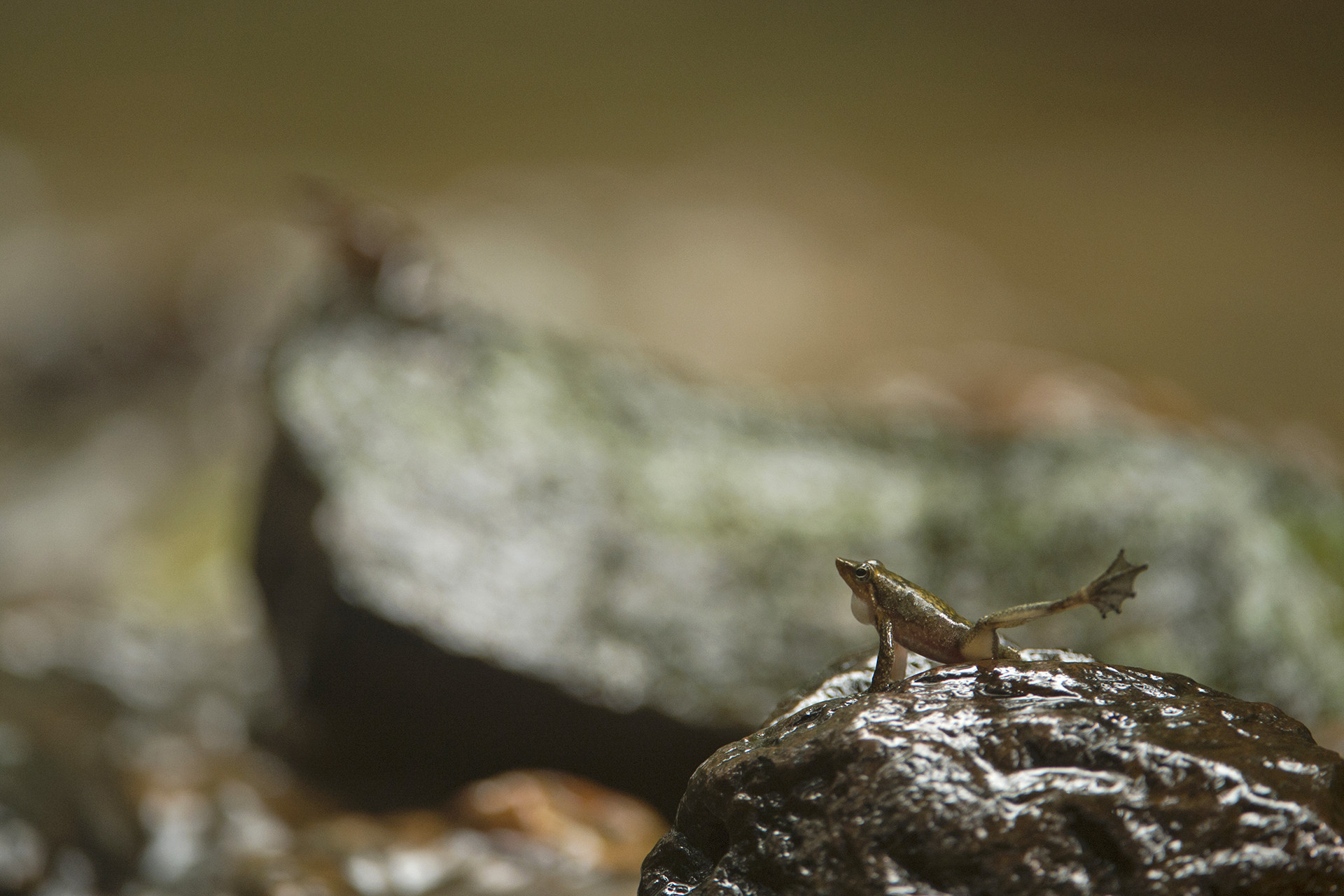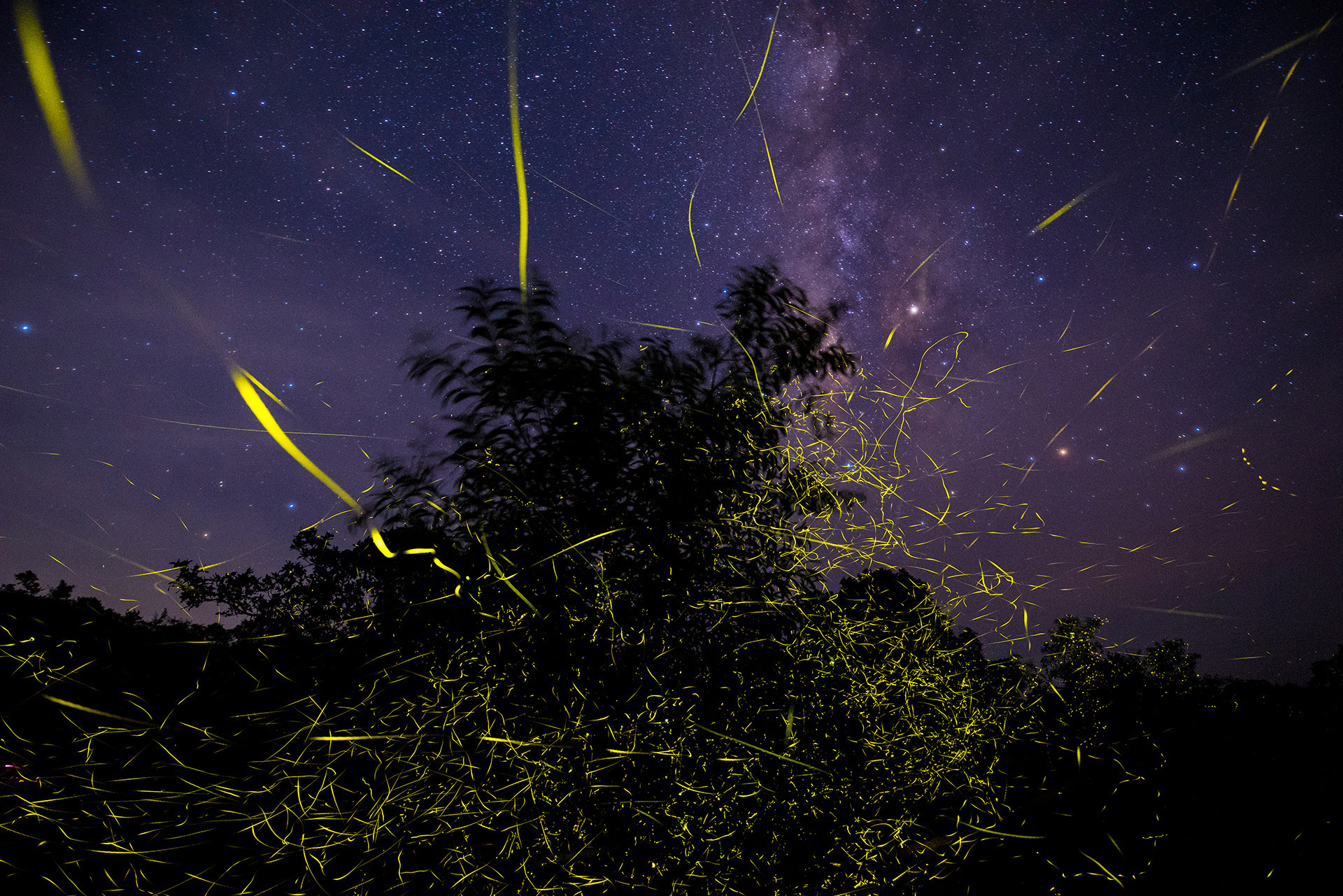The animal world is driven by purpose. Every action is driven by a dogged determination to achieve one of three things – to stay alive, to eat, and to procreate. One might think that of the three, staying alive and eating to stay alive might be more important, but, given that numerous species give up food entirely for long periods and almost die trying to find a mate, it is safe to say that reproduction comes first. And the sheer variety of methods they use to find a partner and then fight to win the right to mate are just off the charts. The drama and excesses of their courtship and mating rituals can put all the traditional romantic overtures of the human world to shame.
From building dens together to sealing their partners shut in a tree hollow, the animal world has a unique way of expressing love. This photo feature gives you an intimate look at their love lives as we share interesting trivia and breathtaking images. We thank our community of photographers who have shared their work with us to bring this photo feature to life.
Hira Punjabi | Porbandar, Gujarat
Come breeding season, male Lesser Flamingos are ready to hit the dance floor to find a potential mate. Well, to be fair, they dance throughout the year in preparation and increase the frequency during the breeding season. Flamingos move around in large flocks of about 1000 birds. Male flamingos exhibit typical movements like head bobbing, pointing their bills upwards, snapping their bills to their lower neck, bowing and displaying wing salutes. They also display their red tail feathers and produce roar-like sounds. These displays are sometimes repeated for several weeks. Lesser Flamingos are not annual breeders, and individuals are known to breed anytime between five and eight years.
Not many animals can claim to have a festival around their courtship period. In Gujarat, the Pink Celebration for Flamingos was initiated in 2014 by the Mokarsagar Wetland Conservation Committee (MWCC) to raise awareness about flamingos as a flagship wetland species.
Merlin Selvan | Mudumalai National Park, Tamil Nadu
Not ones for subtlety, Indian Peafowl have elaborate courtship rituals. Being polygamous, they live in small family units, and during the mating season, which coincides with the monsoon, both sexes let out distinct meowing calls. Having iridescent feathers must provide an unfair advantage to the peacock, but sadly, it looks like the colours do not impress the peahen. Researchers who studied peacock courtship rituals found that the female spent a lot of time looking at the male's legs and the lower parts of the train. Of course, the feathers help peahens spot a potential mate across distances and peahens seem to prefer impressive feathers with more number of eyespots on them. If the peahen is satisfied by her choice of mate, she will crouch on the ground and the peacock will produce a single loud call signifying the end of courtship. The peacock will then mount the peahen and transfer its sperm through the cloaca, an act that lasts for a few seconds. The birds then part ways, and the male proceeds to look for a different mate.
Suketu Purohit | Little Rann of Kutch, Gujarat
Denizens of the desert, Desert Foxes usually begin courtship in the month of November, although this varies based on their geographical location. They undergo morphological changes during the breeding season, displaying darker ventral and neck colours and whiter legs. Their coats become thicker, and their colour changes to dark brown. Pre-mating rituals include pushing and chasing each other. They also poke their noses against each other while producing squeaking noises. Male foxes have been observed to offer food to females to initiate courtship. Female foxes give birth to a litter of about 2-4 pups which are raised in elaborate dens made by their parents. The dens have multiple openings which serve as escape routes in case of an attack by a predator. Female foxes are also known to make multiple dens within the area to protect their offspring.
Prithivi Shekara | Nagarahole National Park, Karnataka
Elusive by nature, it is not easy to witness a leopard, let alone a mating pair. Since leopards live solitary lives, a female leopard uses scent marking to signal her entering the oestrus phase. She urinates across her territory, and the dominant male leopards in the vicinity pick up the scent, gaining knowledge of her availability. Courtship is usually initiated by the female. She moves back and forth in front of the male, rubbing her head against him. The male then mounts the female, biting the back of her neck. Ovulation occurs during mating, and as the sperm produced by the male is weak, leopards mate several times in a day, for multiple days, to ensure fertilisation. Some records indicate that they mate as many as 250 times over a period of five days. Female leopards have also been observed to mate with multiple dominant males in the region to ensure the safety and survival of her cubs.
Sreedhar Vijayakrishnan & Ganesh Raghunathan | Valparai, Tamil Nadu
Although male Asian Elephants can breed throughout the year, they are known to enter a period of heat called musth wherein they undergo physical changes such as swelling and secretion of the temporal glands and dribbling of urine. In this phase of elevated testosterone levels, male elephants often engage in fights with other males to establish their dominance and their mating rights. Courtship behaviour includes smelling the female's genitals and urine, and also placing the trunk on the female's mouth. Females show courtship behaviours like running away from the male when pursued or walking in a specific way. Once a partner is accepted, the male elephant mounts the female for a short mating duration of less than a minute. At the end of the gestation period, females give birth to one calf.
Ritobroto Moitra | Kaziranga National Park, Assam
Love is in the air, and this male Indian Rhinoceros can smell it. However, courtship is a little complicated when it comes to the rhinoceros as the timing must be perfect. Male rhinos undergo a period of heat which must synchronise with the female's oestrus cycle. Female rhinos on entering heat produce distinct calls and squirt urine to attract the male. Male and female rhinos chase each other, sometimes even fighting with their horns. If the courtship is successful, the female agrees to mate, which lasts anywhere between 20 and 70 minutes. They part ways immediately after, leaving the site of courtship.
You may also like to read
Sandipan Ghosh | Ranthambhore National Park, Rajasthan
The mating rituals of big cats were shrouded in mystery for the longest time, as they usually pick secluded regions within dense forests for mating. Tigers can mate at any time of the year. Before they enter the oestrus phase, female tigers mark their territory with urine that leaves a distinct smell, thereby signalling to the male. Once they are in heat, they call out to the male tigers using vocal cues such as roars and moans. Courtship rituals involve both sexes moving around in circles and growling at each other. Sometimes territories of a few tigers can overlap, leading to a fight between the males for mating rights over a female. Once a male approaches, there is a courtship of sorts where they vocalise even more, lick and smell each other, and rub bodies against each other. When the female is ready, she will lay on the ground and present herself for mounting. The male tiger then approaches the female to initiate mating. To increase the chance of fertilisation, over the next few days, they mate many times over, sometimes as frequently as once every 5-7 minutes. Tigers mate with several partners during their lifetime. Tiger cubs are raised solely by their mothers.
Shiva Kumar | Valparai, Tamil Nadu
Not ones to turn away from commitment, Great Indian Hornbills form monogamous pairs and breed between the months of January and April. Males engage in aerial casque-butting to weed out competition. The winner gets to woo the female by presenting her with fruits. Males also call out to their potential mates using a loud 'kok' sound. The couple then looks for a suitable nesting site within hollows of large trees. Once they find the right spot, they monitor the area for a few days to ensure it is safe. The female builds a nest within the hollow and moves in, sealing the cavity using faecal matter. Only a small opening is left through which the male brings her food. Female hornbills lay a clutch of one or two eggs which are incubated for about 40 days. Chicks develop within these sealed nests, and stay on with their parents, only to leave when they become independent.
Soham Chakraborty | Malda, West Bengal
Indian Bullfrogs don't believe in showing their potential mate their true colours. Largest among the frog species found in India, male bullfrogs are normally brown in colour. During the breeding season, they turn yellowish-green and have distinct blue twin vocal sacs. Although how this happens is still a bit of a mystery, it is believed that the brighter the shade, the better it is for the male. Indian Bullfrogs breed during the monsoon season and the competition to mate is fierce. Male bullfrogs congregate near paddy fields and in freshwater wetlands, and call out with their loud croaks to attract females. As seen in the image, single male bullfrogs even latch on to mating pairs and use their hind legs to kick off other competing males for a chance to mate with the female.
Kaustav Chattopadhyay | Thattekad, Kerala
For Southern Coucals, the way to a woman's heart is through her stomach. Originally considered a subspecies of the Greater Coucal, the Southern Coucal is now designated as a full species. They are found throughout peninsular India. Considering that their breeding season falls between June and September, they may not be too thrilled to be featured in February. During the season, males chase females on the ground and offer them food as gifts. And how do females respond to show acceptance? With a droop of their wings. They proceed to build cup-shaped nests. Interestingly, although they belong to the same order as cuckoos, Southern Coucals are not brood parasites.
Shubham Akolkar | Vadodara, Gujarat
Some high-winged romance on display here. Identified by their black and white plumage and their striking long pink legs, Black-winged Stilts breed in shallow lakes, ponds and marshes. Males put their best foot forward during courtship by engaging in bill-dipping, preening, splashing water and walking in circles around the female. Females signal their acceptance by lowering and extending their necks. They also cross their beaks and take a few steps together, like a ballet on stilts. The male then hops onto the female to copulate, which lasts for a few seconds. Parent stilts are not picky about where they raise their children and build nests in depressions on the ground or by placing a mound of vegetation near the water. Both male and female stilts take turns incubating the eggs.
Salil Nair | Kibber Wildlife Sanctuary, Himachal Pradesh
Red Foxes usually mate between the months of December and March. Although the courting process is not well documented, we do know that they use scent marking and loud vocal barking noises to attract a mate. The male Red Fox in the image had sensed the pheromones emitted by the female who was in heat, and all he had in mind was to mate with her. In directions a compass would fail to conjure, the male chased the female. Even in such harsh climatic conditions, there is always a way, and the Red Fox managed to convince his lady love. Once potential mates find each other, they spend about three weeks together, hunting and travelling within their territory. Eventually, they locate a suitable den for themselves. Females give birth to a litter of about 4-9 pups.
Arvind Ramamurthy | Kolhapur, Maharashtra
They may inhabit arid shrublands and plains, but that does not stop Fan-throated Lizards from adding a little colour to their lives. Male lizards have a loose colourful patch of skin called a dewlap, which they display during the breeding season to attract potential mates. Dewlaps are not present in females. The lizards follow this display by either shaking their heads up and down or moving the dewlap from left to right. For better visibility, males perch themselves on an elevated surface like a bush or a rock. They are also known to patrol their territories while looking for a potential mate. The lizards also use their fans to establish their dominance over other males in the territory.
Mohith Shenoy K | Udupi, Karnataka
To die for love takes on a whole new meaning when you are a spider. Siler semiglaucus, also known as the Metallic Jumper or Jade Jumping Spider is a commonly found spider species in India. Among jumping spiders, males try not to be too picky about their partners. Often this translates to trying to mate with a female spider of a different species. Before you jump to conclusions, let's just say in the spider world this is an honest mistake. There are several thousand species of jumping spiders, and often they have overlapping habitats. Species distinction is easier in male spiders than females based on morphological features, especially the colours they sport. What's the worst that could happen when a male approaches a disinterested female? He could end up being her meal for the day. Being much larger, female spiders sometimes attack the approaching male and resort to cannibalism. Male spiders engage in courtship displays that include erratic dancing and moving their limbs rapidly. Some females are quick to accept the male's advances, while others take their time. Some proceed to eventually mate with the male after attempting a few attacks.
Kalyan Varma | Kathalekan, Karnataka
In the amphibian kingdom, the embodiment of 'love can make you dance' is the Kottigehar Dancing Frog. Seen in primary streams within semi-evergreen and evergreen forest patches of the Western Ghats, this frog species has a unique way of grabbing the female's attention. It extends its feet up in the air in quick succession, a move that has earned it the moniker 'dancing frog' or 'foot-flagging frog'. Only males engage in this display, and can you blame them? When you have a weak croak and you are surrounded by loud perennial streams deep inside the rainforest, visual signalling does seem like a reasonable option. The frogs also lift their hind legs to protect their territory and warn other males, directing a kick towards the opponent.
Viraj Ghaisas | Bhandardara Dam, Maharashtra
Lighting up in love! Fireflies use bioluminescence for various reasons, one of which is to find a potential mate. Flash patterns aid fireflies to locate members of the opposite sex within their species. Well, when there are 2000 of them, this is an important concern to have. Female fireflies choose a mate based on the intensity of light as well as the flash rate. Some firefly species use pheromones to find a suitable mate, and others use both visual and olfactory cues to initiate attraction. Fireflies congregate in large numbers just before the monsoon season to procreate. Time is of the essence here as fireflies live for only a few months as adults. This is why males engage in constant signalling till they find a consenting female. Often this can take up to hours. Once they do find the right partner, the lights go out, and the mating begins.
